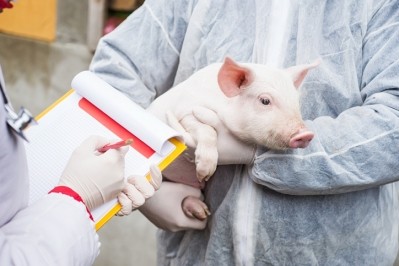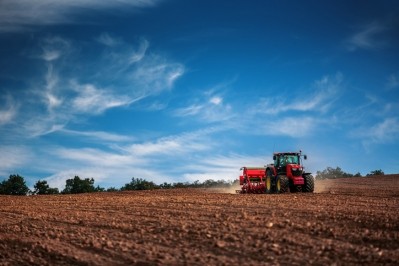USDA sees record soybean harvest for Brazil

The US Department of Agriculture (USDA) released details about Brazilian soybean production, processing and exports on Thursday [June 27].
Interestingly, it sees domestic use of soybeans growing as Brazilian meat producers look to capitalize on the greater demand for animal protein in China due to pig culling after the ASF outbreak.
Overall, the US agency expects Brazil’s soybean production area to expand in 2019/20 and a return to average yields is anticipated to set a production record.
The agricultural attaché, who wrote the report, noted: “The 2019/20 soybean production is forecast at 124m metric tons (mt), a rebound from the current 2018/19 production projection of 116m mt."
More than half of all the cultivated crop area in Brazil is dedicated to soybeans, she said.
"Soybeans are by far the most liquid agricultural commodity in Brazil, and therefore, as a rule of thumb, planted area should continue to increase, even if marginally, with every new season.”
However, the impact of the outbreak of African Swine Fever (ASF) in China could be a slowing down of the rate of future expansion of soybean output in Brazil, she said.
Domestic and export soybean prices fell in Brazil in the first part of 2019 following expectations that China and the US would resolve trade differences and there would be business as usual in terms of soybean trade between those two markets. "[However,] the domestic soybean price situation changed dramatically by the end of May, with a shifting, negative outlook on the US-China trade talks triggered by additional tariffs and increased uncertainty regarding the final deal."
“Prices jumped further, as of the last several weeks, on the back of poor spring weather in the US, which is likely to affect both corn and soybeans planted area as well as this season’s yields,” she added.
Feed use and ASF
Soybean processing in Brazil is anticipated to climb 2% to 44m metric tons in 2019/20, the attaché said. Most demand for processed meal and soybean oil is domestic.
“Soybean meal is a key feed ingredient for the domestic livestock and poultry sectors, which typically grows several percentage points annually,” she said.
Domestic meal consumption in the next season is expected to see an above-average increase:
“Post estimates Brazil’s soybean meal production at 33.4m mt for the current 2018/19 season, with about 18.2m mt consumed domestically for feed, and 16.1m mt of soybean meal exported.
“The domestic soybean meal consumption estimate has increased from last season’s feed consumption of 17.8m mt.”
“The increase in domestic meal consumption is based on higher projected demand from the domestic livestock and poultry industries, which are ramping up production to meet the growing meat export demand that has been stoked by the sharp contraction of global pork supplies due to ASF in China,” she added.
Production highlights, predictions
Soybean acreage in 2019/20 is expected to increase by about 2.5% to 37m hectares, said the attaché.
However, interest in expanding the planted area is tempered by the understanding that Brazilian soybean producers in some parts of the country are already close to capacity for land expansion, she said. Adding additional hectares would involve an expensive, multi-year conversion process to address “degraded pasture land.”
“Planting decisions next year are more likely to be conservative given the expected diminished soybean demand from the world’s leading importer – China – where swine production has been ravaged by the on-going outbreak of ASF,” she said.
The Mato Grosso region is expected to stay the main producer of soybeans in the country, the attaché said. However, planted area there is anticipated to expand by less than 1% next year.
“[The] forecast for planted area may be revised if there is a conclusive end to the ongoing US-China trade tensions,” she said. “Should the US-China talks be concluded, market analysts in Brazil expect that Beijing will decrease its soybean purchases from Latin America (Brazil and Argentina) in favor of sourcing more beans from the US.”
“In this event, the 2019/20 forecasted planted area in Brazil may be revised slightly lower,” she said.
Export expectations
Low prices at the start of 2019 reduced soybean sales, the attaché said. “For the month of May 2019, Brazilian farmers had sold 10.84m mt of soybeans, 12% below the 12.35m mt of soybeans sold at this time in 2018, and 1% less than 10.96m mt sold in 2017 during the same timeframe,” she added.
“Farmers are not particularly keen to amp their sales right now, due to many believing that prices will continue to climb later on in the year, following the same trend line as in 2018,” she said.
Exports in 2019/20 are expected to rebound from current season expectations to reach 75m mt, she said. The expansion stems, in part, from additional supplies and the anticipation of a return to more “typical” sourcing from China, along with increased global demand.
Brazil generally supplies about 50-55% of the soybeans China purchases, she said. By June, the forecast was for China to buy about 87m metric tons in 2019/20 with about 44-48m metric tons coming from Brazil.













